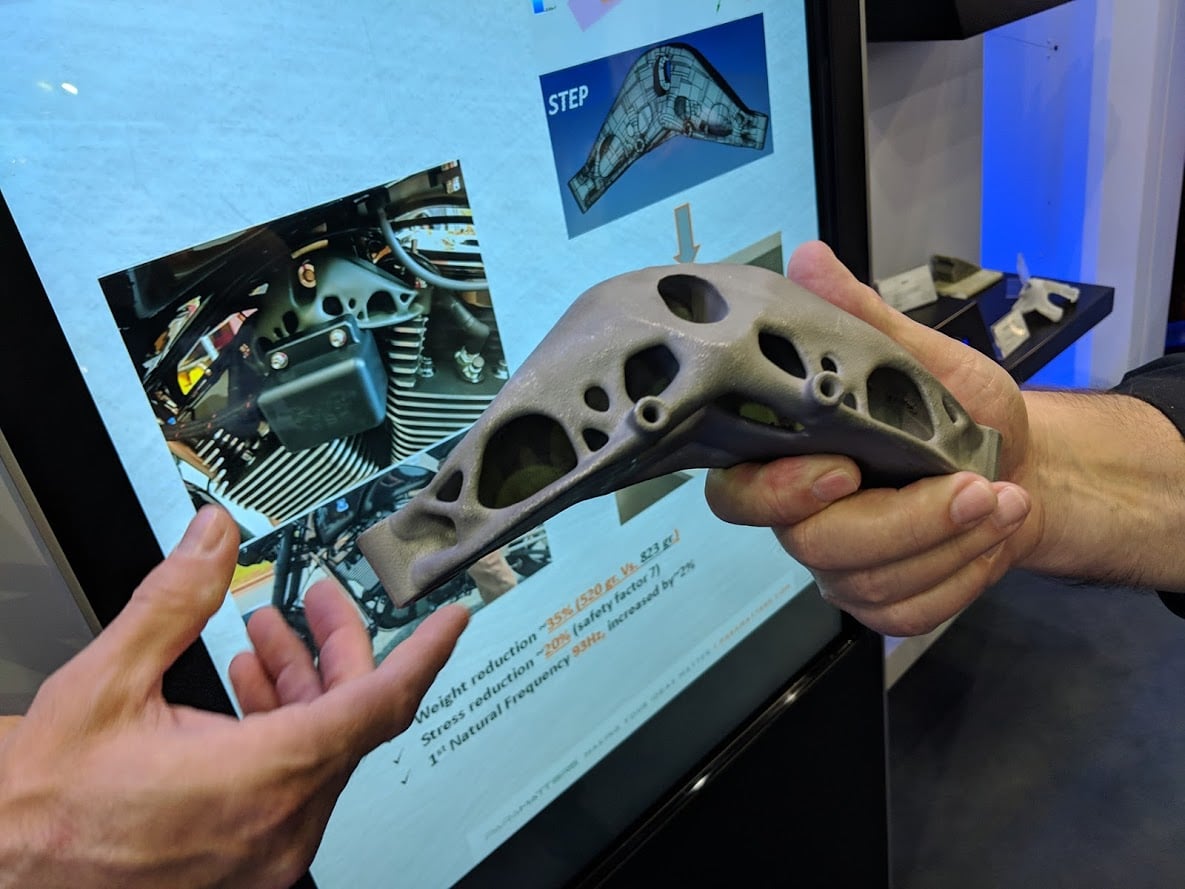![A 3D printed part designed with ParaMatters’ generative design software [Image: Fabbaloo]](https://fabbaloo.com/wp-content/uploads/2020/05/IMG_20181114_102710_img_5eb0a15cd87f8.jpg)
The companies in the XponentialWorks portfolio are looking to enhance performance in generative design and additive manufacturing.
At formnext 2018, XponentialWorks highlighted the latest from Nexa3D, ParaMatters, NXT Factory, and Techniplas. XponentialWorks Founder, Chairman, and CEO Avi Reichental walked me through the newest offerings.
![XponentialWorks at formnext 2018 with Techniplas, Nexa3D, NXT Factory, and ParaMatters [Image: Fabbaloo]](https://fabbaloo.com/wp-content/uploads/2020/05/IMG_20181114_100345_img_5eb0a15dbbb85.jpg)
“This whole space is encumbered by size, speed, and scale,” Reichental said as we began our chat near the newest 3D printers from Nexa3D.
“After last year’s formnext, we looked at our tech. We began to iterate, and focus on breaking barriers in size, speed, and scale. We looked at our tech and thought: What would it look like if we scaled it big? How big is big? There’s a combination of light engine and membrane technology to take full advantage of a significantly larger XY build plate, and to go more significant on Z. What could we bring to market to upgrade additive manufacturing — and do it at at a reasonable price point, that was easy to own and operate?”
With a long and storied history in the 3D printing industry, Reichental noted with a smile that he’s “been doing this longer than most” and acknowledged that “it’s hard for me to get excited” about announcements these days. The lingering end to that sentence was a large “but…” as he gestured to the NXE 400 ultra-fast SLA production printer.
Nexa3D Chief Product Officer Izhar Medalsy joined the conversation to look at the particulars of the new speedy machine. It was built, he explained, to meet market needs as the team had worked to deeply understand what users wanted and needed.
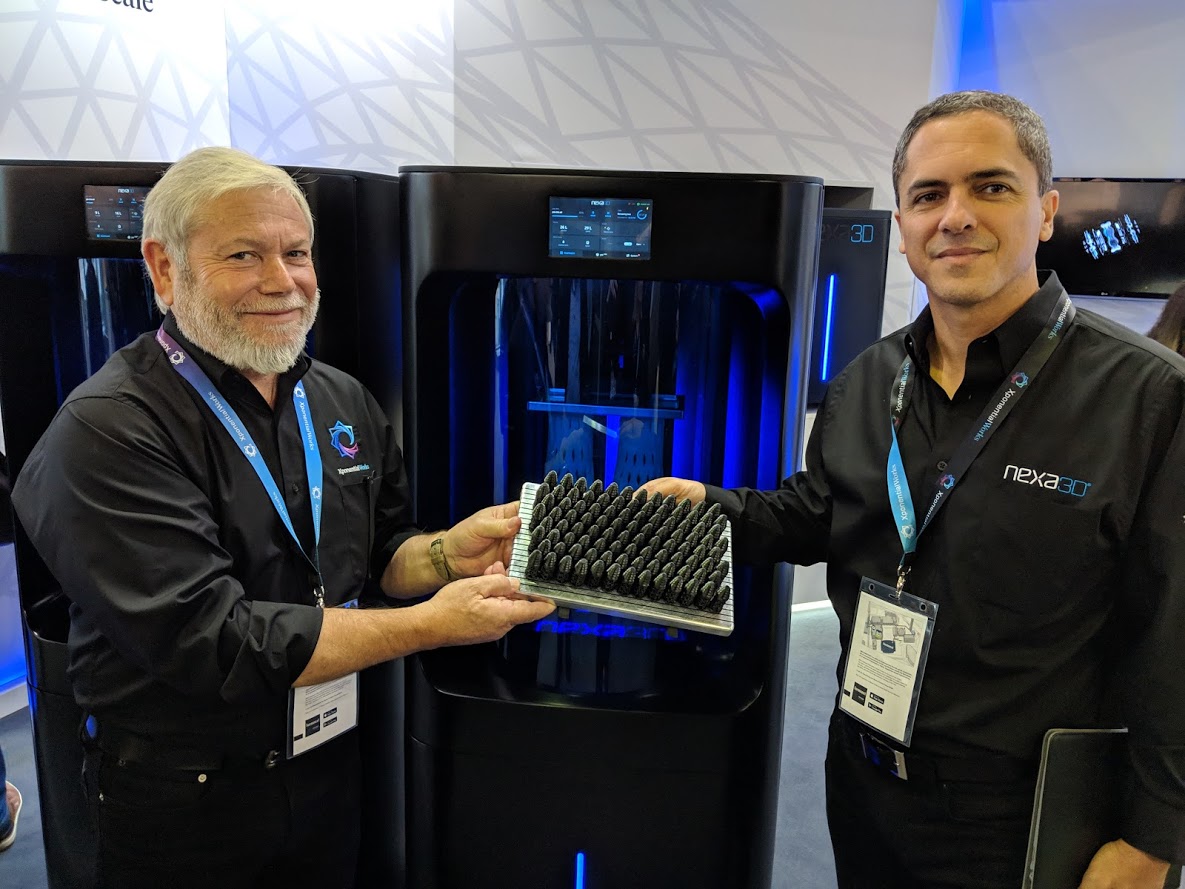
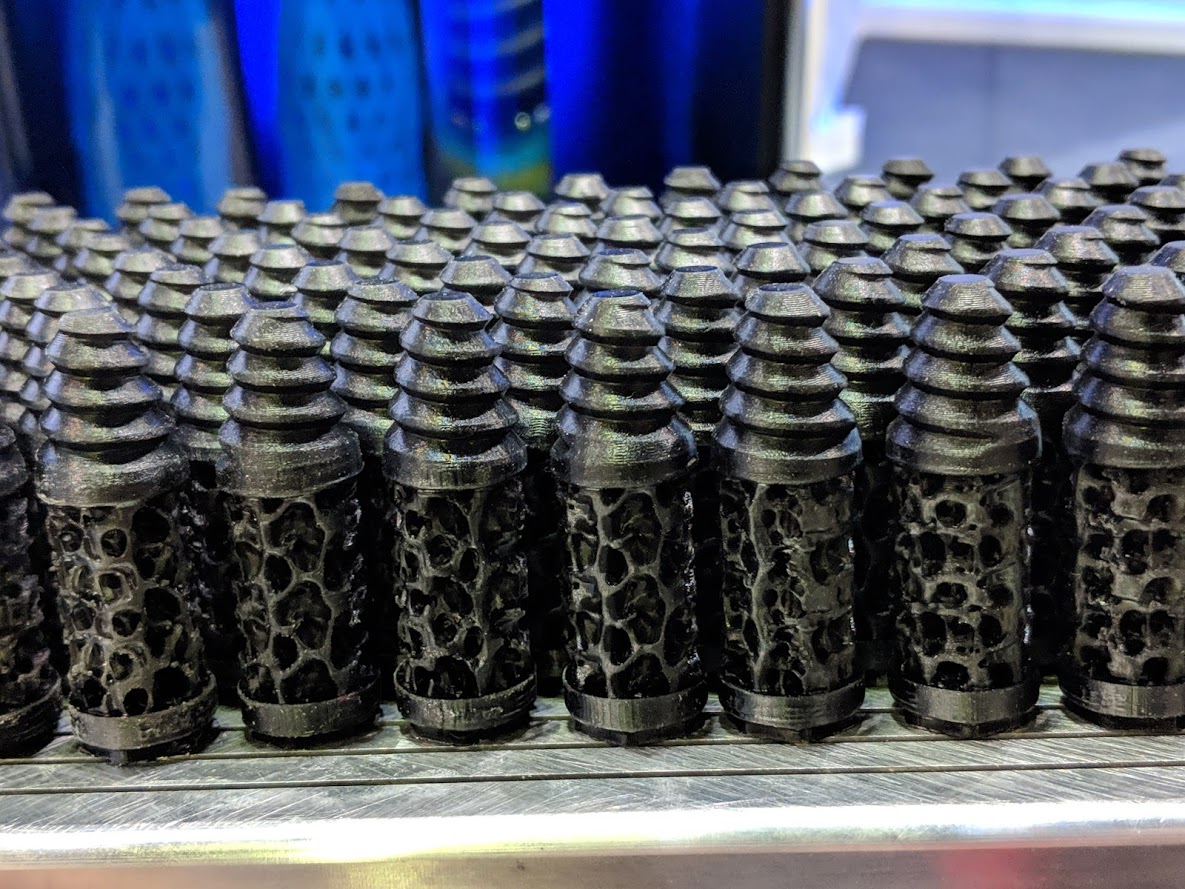
Demonstrating a full build tray of upscaled dental screws, Medalsy noted that the build size and speed can compare to injection molding, with 100 pieces 3D printed in 10 minutes, breaking down to six seconds per element. The wash and cure cycle needed for that build is just 30 minutes before the parts are “ready to go,” Reichental added. Coming back to his earlier point about accessible technology, the base model (with a 7L resin volume) sells for about $20K, while the 3D printer on the show floor (with a 16L volume) was at about the $50K mark.
“It’s a streamlined process,” Medalsy said. “Our software is based on voxel technology, and the printer focus is on user experience.”
With 4K resolution — “In a world of ‘fake news’ where others will say that 3800 is 4K, this is really 4K,” Reichental said — the prints coming off the NXE 400 did show very fine detail indeed. The system is automation-ready, Medalsy noted, as the team have been “mindful of the need for automation, that can give the right kind of washing, the right amount of curing, for each geometry.”

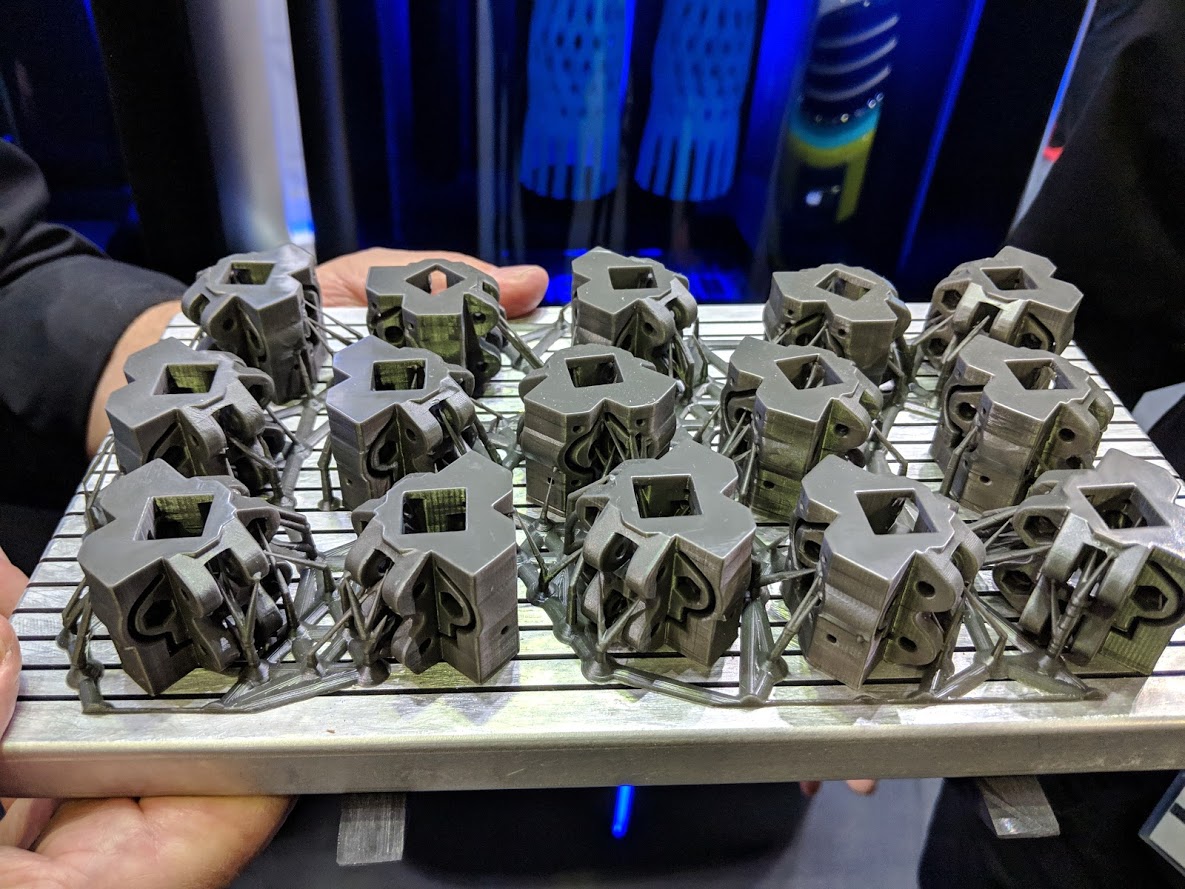
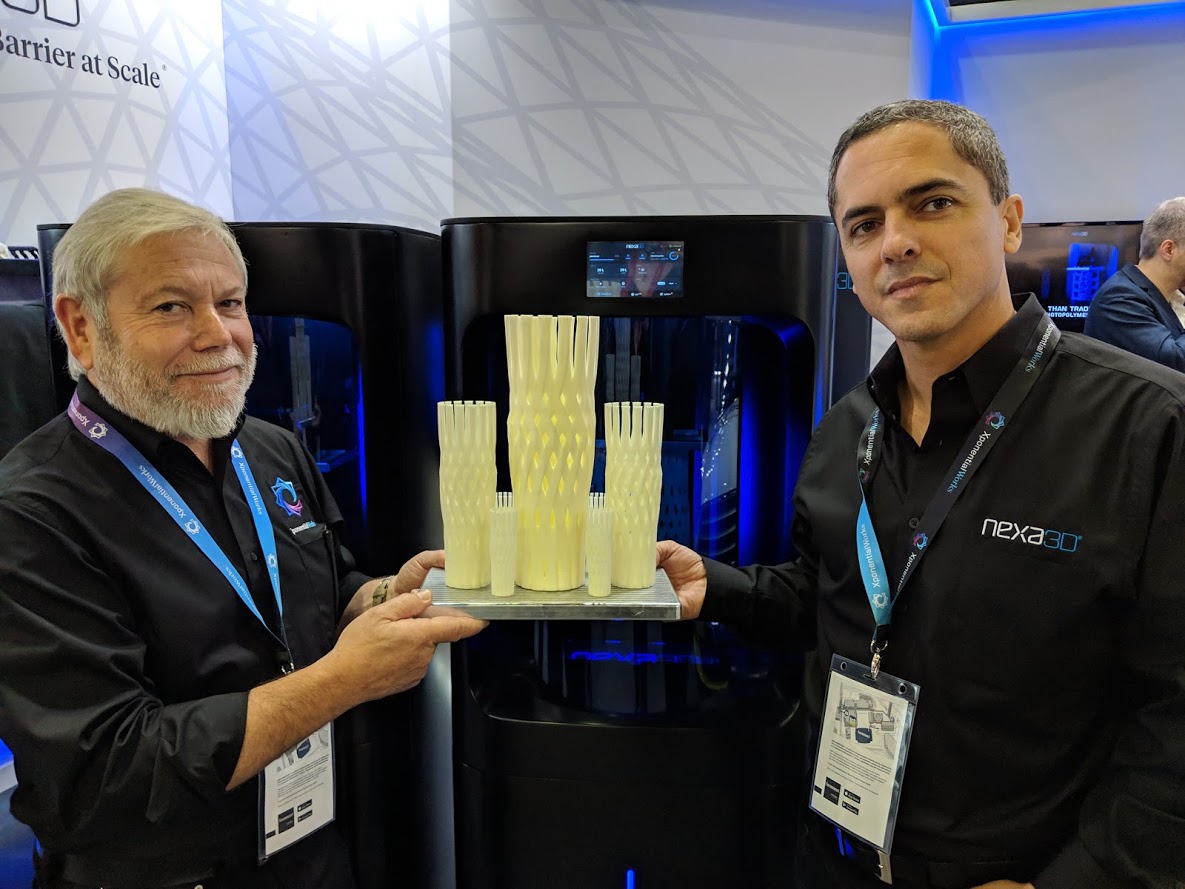
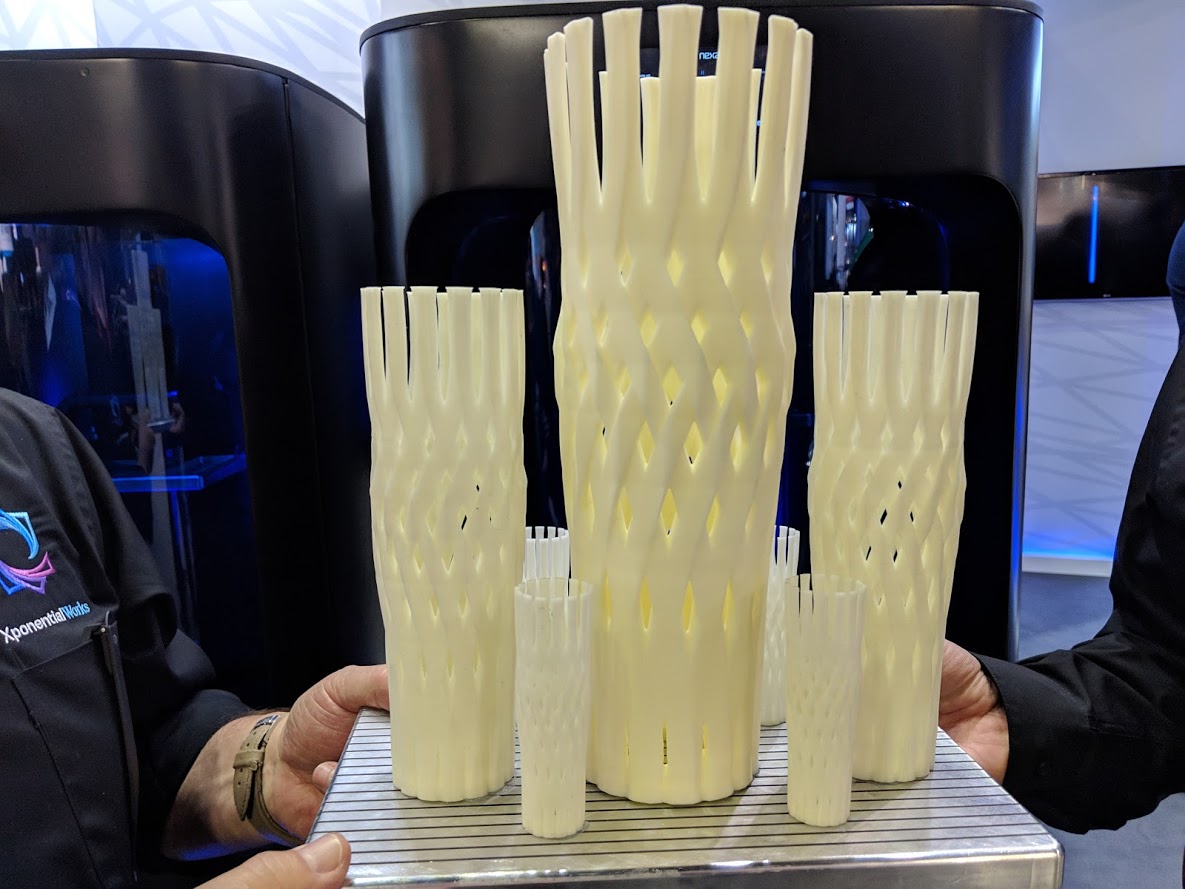
“For us, this is a very exciting development,” Reichental said. “It’s been nearly two and a half years, and this is really our coming out now with this labor of love. Small and potentially large enterprises could see use, as some of these could be small end-use parts. We can’t get yet to CNC tolerances, but can meet injection molding. A lot of people talk micron resolution that doesn’t translate to part tolerances; they mean their system. We are now at the level of average injection molding tolerances, finish, and speed, that show in the parts.”
Turning to another side of the booth, we looked next to software with ParaMatters.
During formnext, ParaMatters introduced the second generation of CogniCAD, its autonomous, cloud-based generative design software.
![ParaMatters CTO Michael Bogomolny and XponentialWorks CEO Avi Reichental demonstrate CogniCAD software at formnext 2018 [Image: Fabbaloo]](https://fabbaloo.com/wp-content/uploads/2020/05/IMG_20181114_102435_img_5eb0a1619f114.jpg)
ParaMatters Co-Founder and CTO Michael Bogomolny joined us as Reichental and I looked to the benefits of generative design and the incorporation of mesostructure.
“We believe our generative design works,” Bogomolny said simply. “You want to get a full design from it, and not do so manually. It’s compatible with all CAD solutions. We solve real engineering problems.”
While lattices are a very popular structure in additive design and feature regularly in geometries we see emerging from generative design, they are not the most practical. Biomimicry provided what ParaMatters sees as a stronger solution with mesostructure optimization.
“Mesostructure is aligned with the principal stresses a design faces. You cannot model this manually,” he said.
Blending topology optimization with optimal porosity, ParaMatters says its CogniCAD solution mimics the strength and structures of nature, as demonstrated by the structure of bones. For practical use of such design, Reichental pointed to aerospace, where fail-safe structural design is a must.
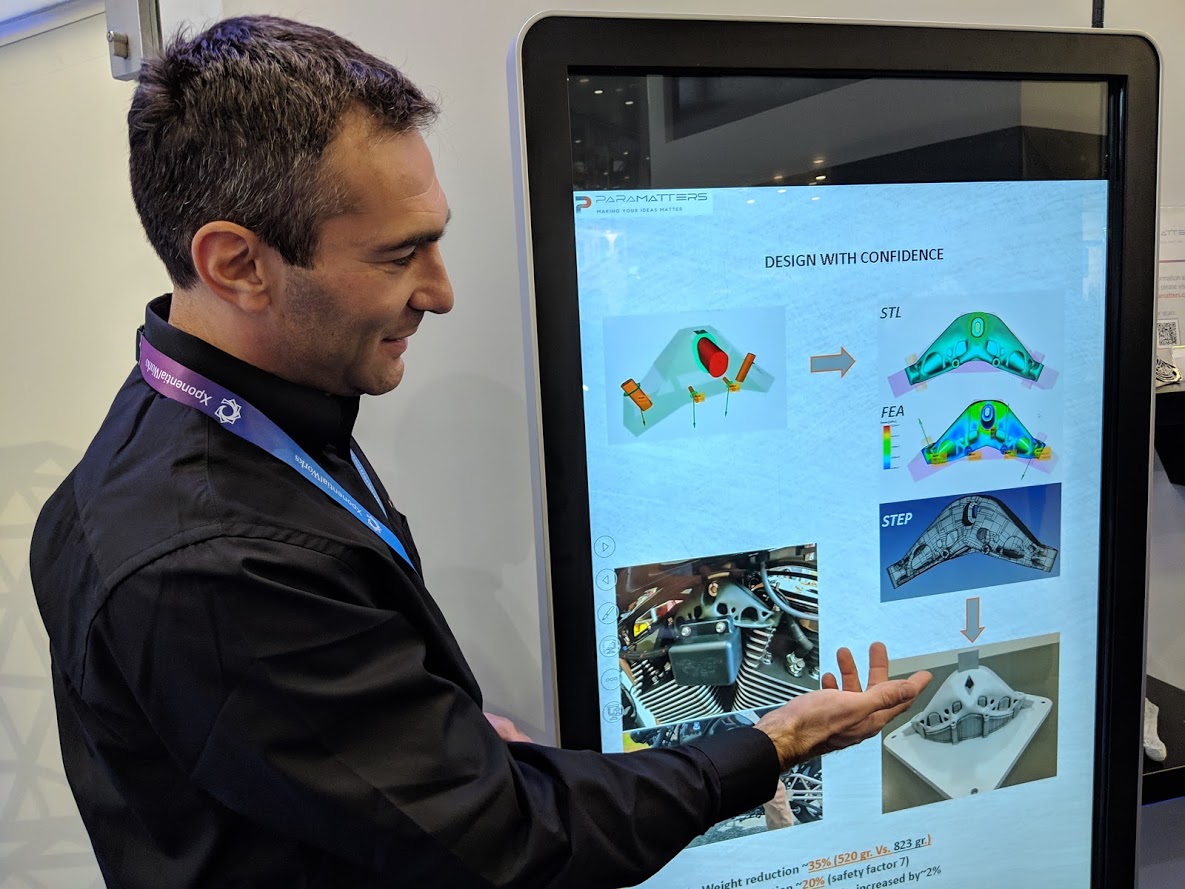
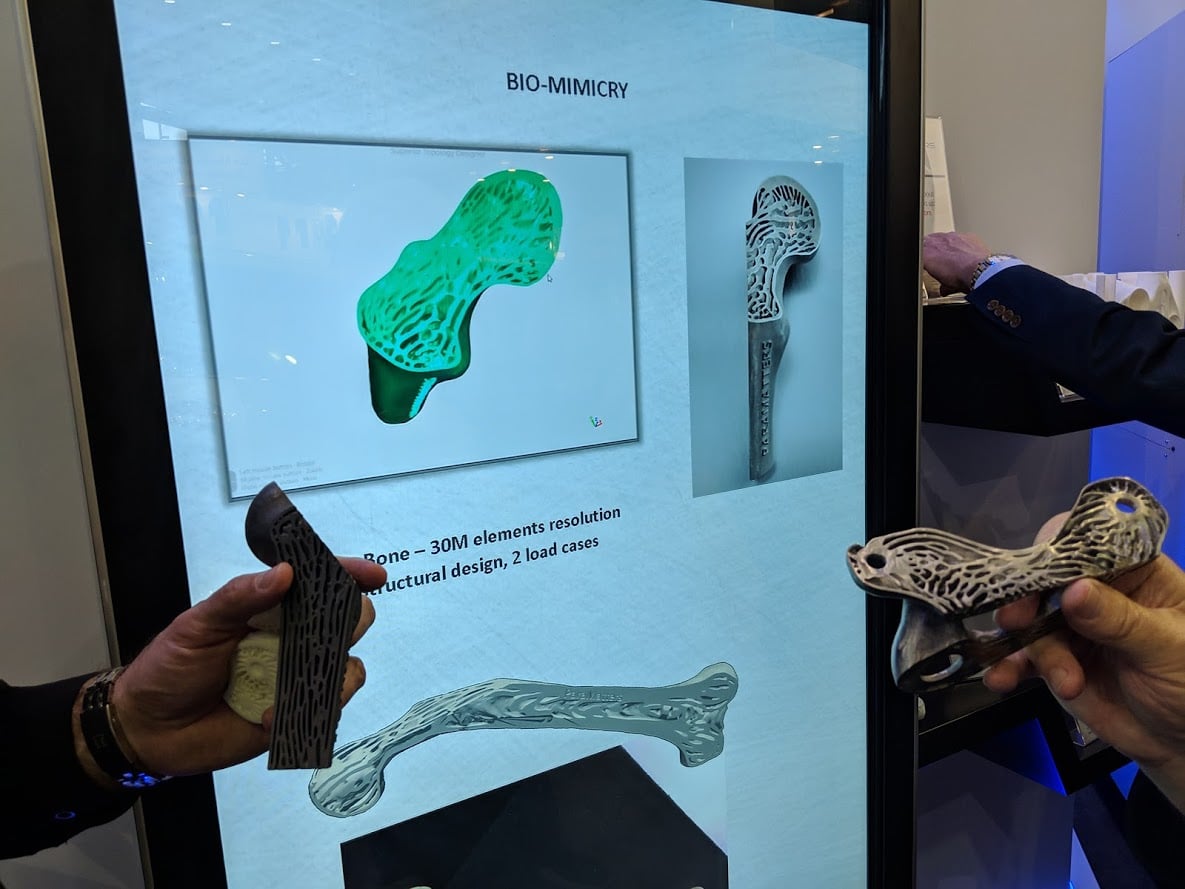
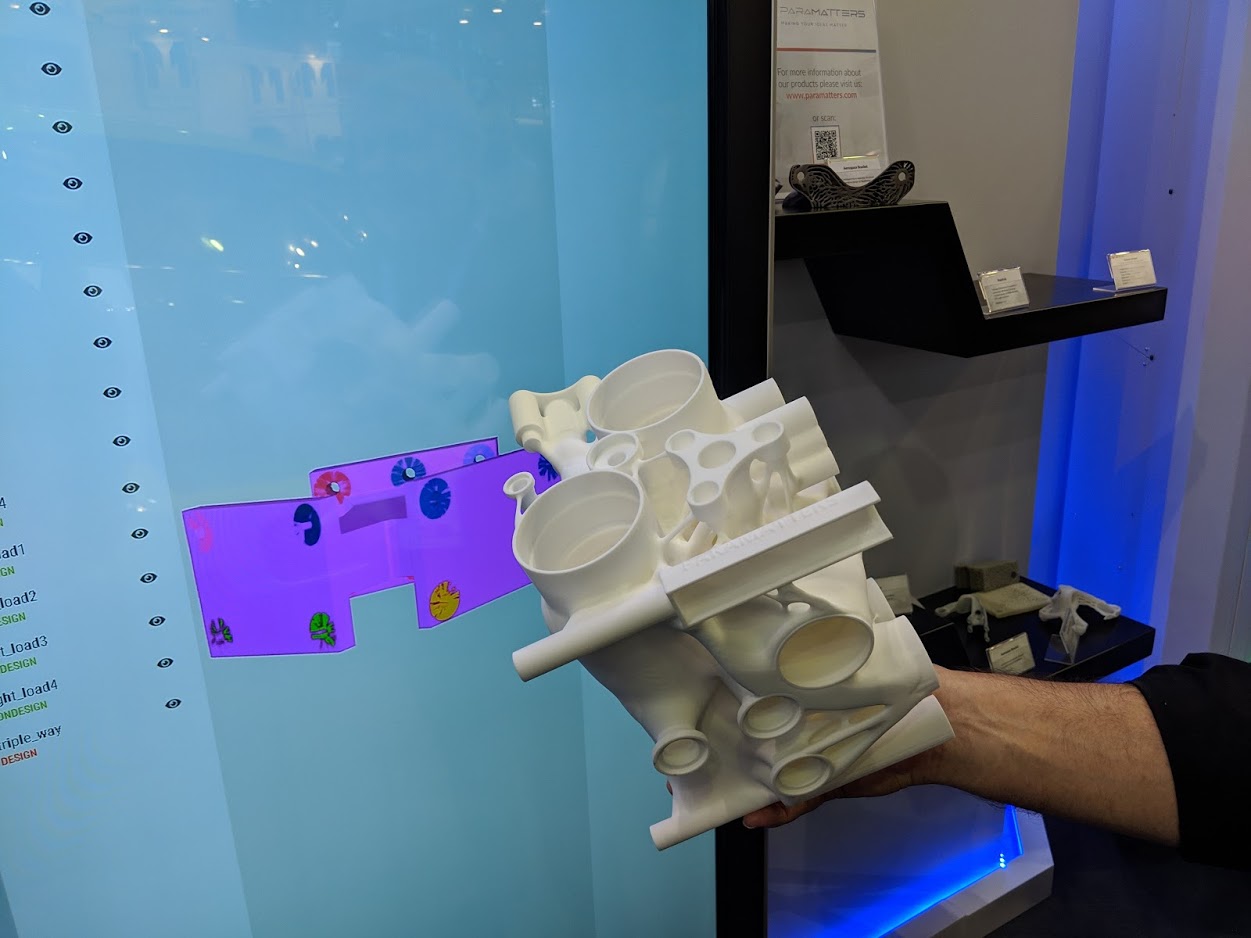
“We are beginning to really unlock the code of what nature patented millions of years ago,” he said. “We didn’t design it; we derived it, computationally and mathematically. There are 60 million finite element points to this engine, and there isn’t a human being alive who could design this. It goes beyond mere mortals’ capabilities. It’s a glimpse into the future. We are beginning to see what happens when personal AI in an engineering sense helps with complex designs ready for additive manufacturing. Generative will become fully autonomous, and in the future we will see the designer as assistance to this design.”
Bogomolny walked me through a quick demo of CogniCAD, showing with a few quick clicks how designs were generated — and then pulling those parts off a nearby shelf to see the real-world results. The 3D printed designs offered the increasingly-familiar look of structures made via generative design, and the infill in them was more akin to the inner structure of a human bone than to the lattices seen in countless other booths’ displays.
With strength in design and a portfolio interest in listening to the industry’s needs and developing marketable solutions, the companies working under the XponentialWorks umbrella are coming together to showcase interesting looks into a generative, additive future.
Via XponentialWorks, Nexa3D, and ParaMatters

